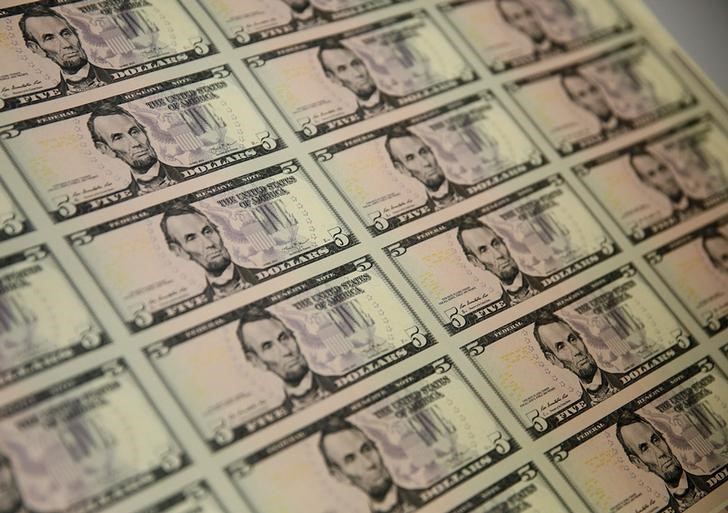Bill Gross warns on gold momentum as regional bank stocks tumble
Investing.com - The U.S. dollar edged higher Tuesday, but remained near its six-week low as uncertainty of trade policies raised doubts about the outlook for the U.S. economy, while the euro slipped slightly ahead of key inflation data.
At 04:10 ET (08:10 GMT), the Dollar Index, which tracks the greenback against a basket of six other currencies, gained 0.2% to 98.855, after falling to its lowest since late April 22 at the start of the week.
Trade tensions weigh on U.S. economy
The Trump administration is urging countries to present their most favorable trade proposals by Wednesday, according to a report from Reuters, citing a draft letter to negotiating partners.
However, U.S. duties on imported steel and aluminum are also set to double to 50% on Wednesday, an indication that tough times likely lie ahead for the U.S. economy.
“Yesterday’s ISM manufacturing surveys delivered a negative surprise, reversing the recent trend of resilient U.S. data,” said analysts at ING, in a note. “The drop in the export gauge to a five-year low may be a signal that retaliatory measures are biting, adding weight to the broader manufacturing complex that is hit by trade policy uncertainty and softer consumption.”
April’s JOLTS report is due for release later in the session, where job openings and layoffs will be scrutinised closely, while durable goods orders for April are also expected to have taken a hit.
“Another round of soft data, particularly in the labor market, can push the dollar back to its April lows,” added ING.
Sterling edges higher after strong growth data
In Europe, EUR/USD traded 0.2% lower to 1.1415, after briefly touching a six-week high, ahead of the release of the flash eurozone inflation figures for May.
Expectations are for consumer prices to have slowed to an annual 2.0% last month after April’s larger-than-expected 2.2% rise, which is seen providing the ECB with room to cut interest rates by a quarter point once more on Thursday.
“The CPI release today will not alter well-cemented expectations for a cut on Thursday, but may increase speculation of a more dovish message by President Lagarde,” said ING.
GBP/USD traded 0.2% lower at 1.3518, with sterling staying supported as the Bank of England remains cautious with its interest rate cuts as inflation remains elevated.
Data released Monday showed that U.K. house prices rose more than expected in May, climbing 3.5% year-on-year, according to data from mortgage lender Nationwide.
On a monthly basis, prices increased by 0.5%, reversing most of April’s decline and marking the largest monthly gain since December.
Aussie dollar hit by tame RBA minutes
In Asia, AUD/USD fell 0.6% to 0.6460 after the minutes of the Reserve Bank of Australia’s May meeting largely reiterated the central bank’s dovish stance.
A host of weak economic readings for the first quarter – including a bigger-than-expected current account deficit – also dampened sentiment towards Australia before Q1 gross domestic product data due on Wednesday.
The RBA had cut rates by 25 basis points in May, and presented a largely dovish outlook on the Australian economy, citing increased headwinds from trade tariffs.
USD/JPY traded 0.1% higher to 142.88, with the Japanese yen handing back some of its safe haven demand gains, while USD/CNY dropped 0.1% to 7.1906, after a long weekend.
Recent purchasing managers index readings signaled persistent weakness in the Chinese economy, as Caixin manufacturing PMI data showed an unexpected contraction in May, in line with government PMI data released over the weekend.
The reading showed export orders for Chinese goods were stalling amid high U.S. tariffs.
